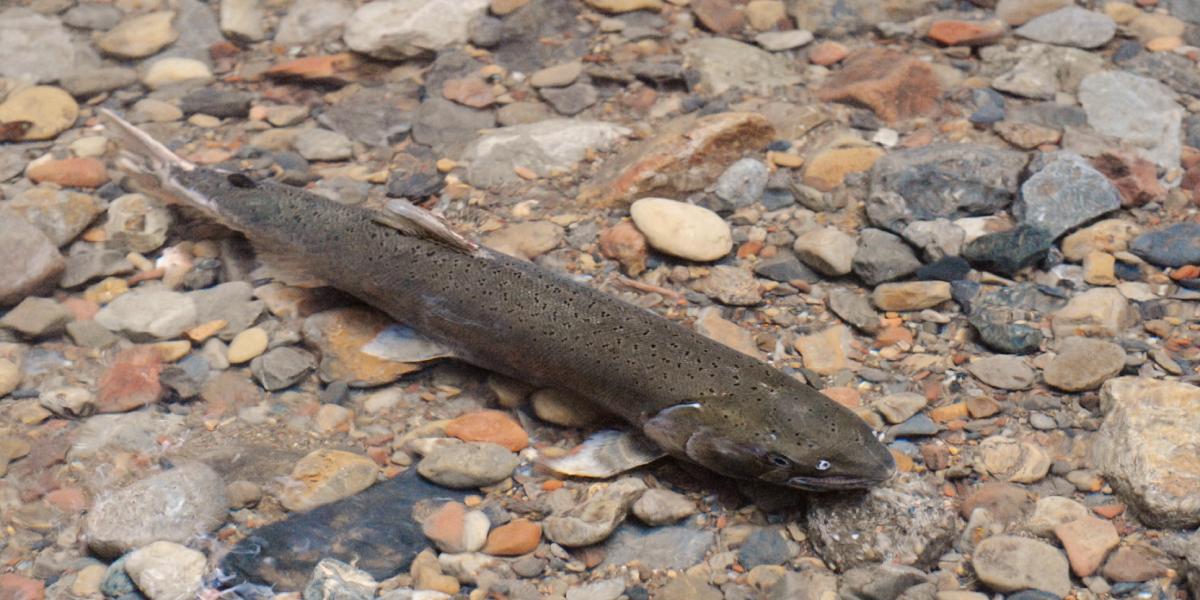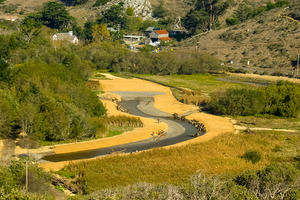
Threatened or Endangered
The Central California Coast population of coho salmon (Oncorhynchus kisutch) is federally listed as endangered.
Population
Whereas in the 1940's, coho salmon in California were estimated to number between 200,000 and 500,000, today's population is estimated to have fallen to 1 percent of historic levels, and the coho of the Central California Coast are considered to be at high risk for extinction.
Description
An adult coho may measure more than 2 feet in length and can weigh up to 36 pounds, however, the average weight of adult coho is 7 to 11 pounds. Coho salmon change in appearance as they move through different life stages. Juvenile coho are distinguished from juvenile steelhead trout in local streams by their dark, vertical bars, known as “parr” marks. During their ocean phase, coho have silver sides and dark blue or greenish backs. As coho return to creeks to spawn, they develop a reddish coloring along the belly.
Range
Although their range spreads up to northern Alaska, the coho in Redwood Creek are a part of the southernmost continually-returning natural population of endangered coho, which is recognized as a reproductively isolated and distinct population. This Central California Coast population extends from Punta Gorda in Humboldt County south to Santa Cruz County.
Habitat and life cycle
Coho salmon are anadromous, meaning they hatch in a freshwater creek, migrate the ocean to mature, and return to the very creek in which they hatched in order to reproduce. Coho have a three-year lifecycle: The cycle begins in freshwater, when a redd, or a female’s nest of eggs, is fertilized by the male. These eggs remain in the gravel throughout the winter and coho embryos develop. In the spring, coho hatchlings- known as alevins- emerge pencil-thin, with a ballooning yolk sack still attached to their bodies, and large eyes. Alevins stay close to the redd for six to seven weeks. When they have consumed all of the yolk sac and grown in size, these fish emerge from the gravel, and are then considered fry. Coho fry feed and grow in the creek for their first year, where they depend on slow-moving water, high oxygen levels in the water with adequate stream cover and abundant shelter to survive and develop the strength they will need for their migration into the ocean. After about a year, smolting begins, as their bodies begin to adapt to their upcoming migration to the ocean, and the young coho smolts begin to travel downstream. The coho live the remainder of their lives at sea, returning to their birthplace only at the end of their life’s arc in order to spawn, restarting the life cycle once more, and then to die. At Redwood Creek, the annual spawning can be observed from many locations along the trail.
Legal protection
The National Marine Fisheries Service has identified seven distinct populations of coho, called Evolutionary Significant Units (ESUs), in Washington, Oregon and California. The coho salmon of the Golden Gate National Park’s Redwood Creek Watershed belong to the Central California Coast ESU. Although not all coho salmon are endangered, in 1996 the federal government listed Central California Coast ESU as threatened, and unfortunately in 2005, updated this status from threatened to endangered.
Our Work
Since 2009, National Park Service and Parks Conservancy staff have worked together to improve habitat for endangered coho salmon and threatened steelhead trout in the Redwood Creek Watershed. The Parks Conservancy was also part of a multi-agency captive rearing effort from 2014 to 2019 to boost the dangerously low numbers of coho in Redwood Creek.

